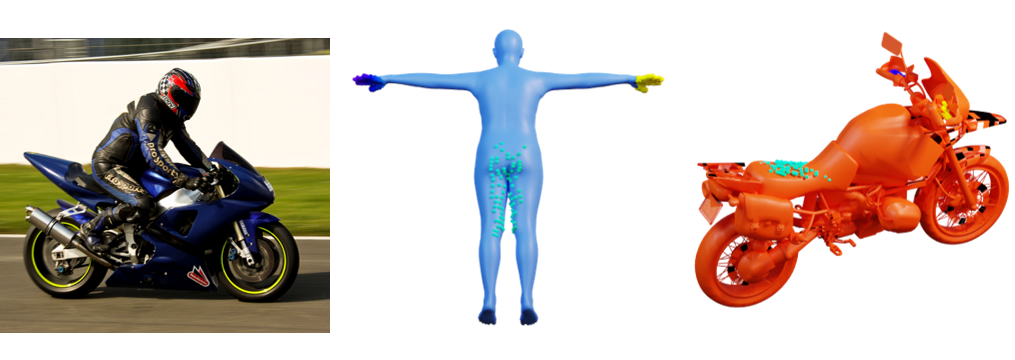

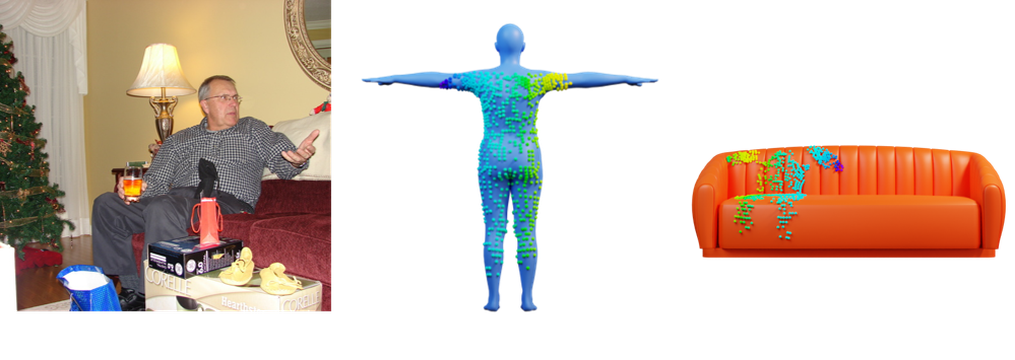
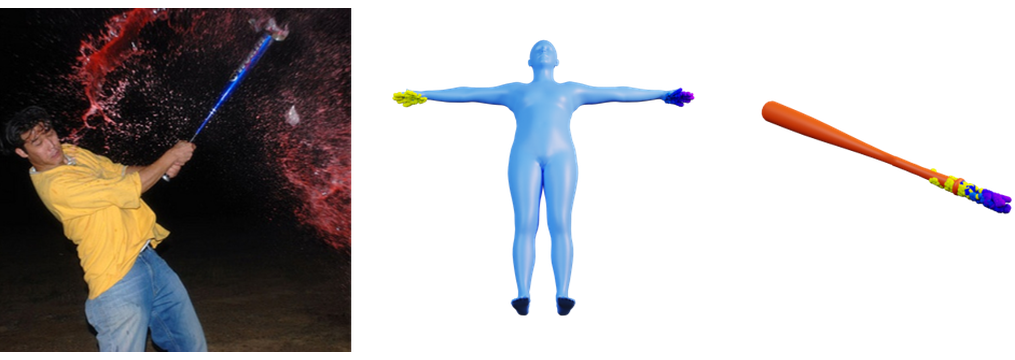
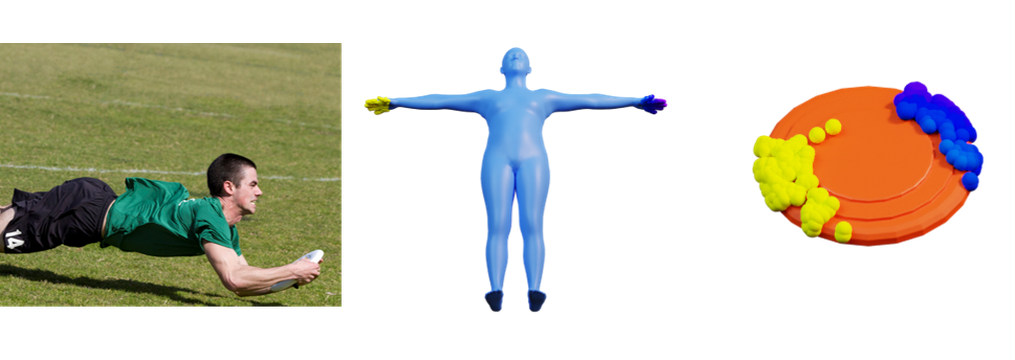
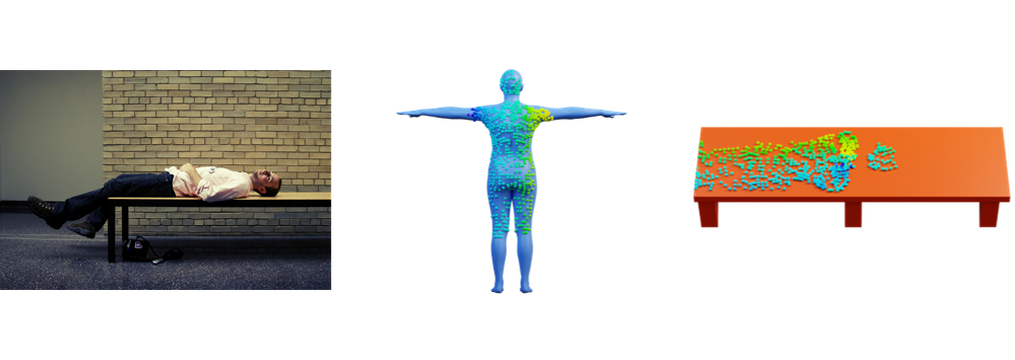







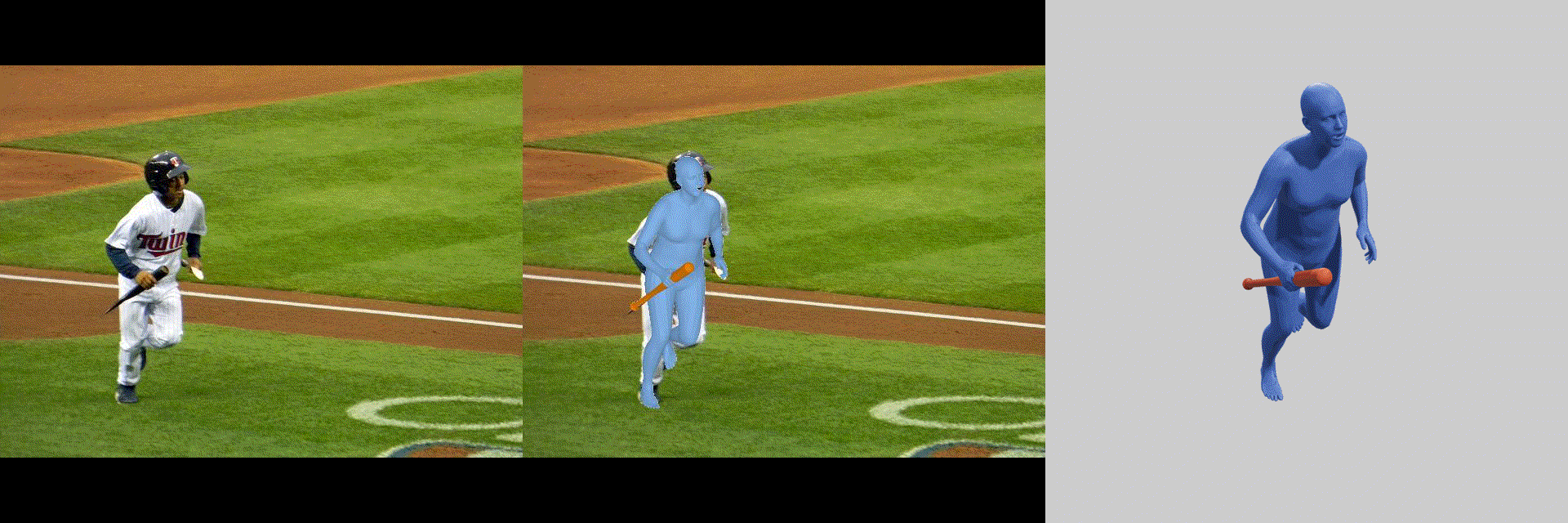
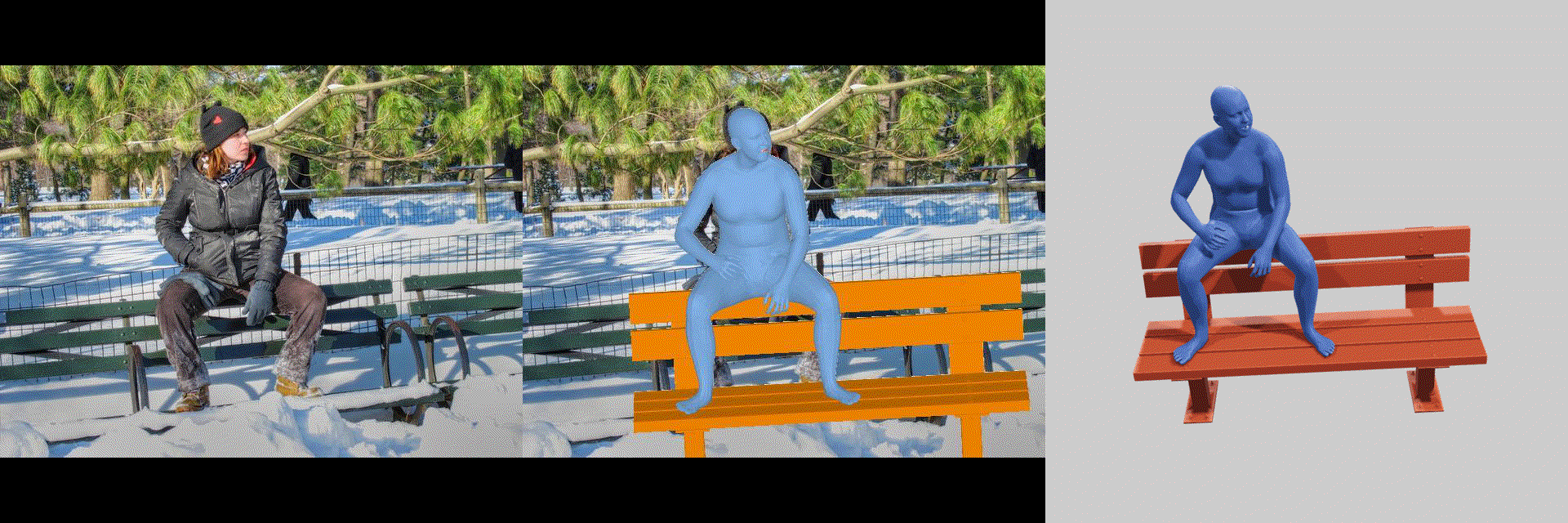


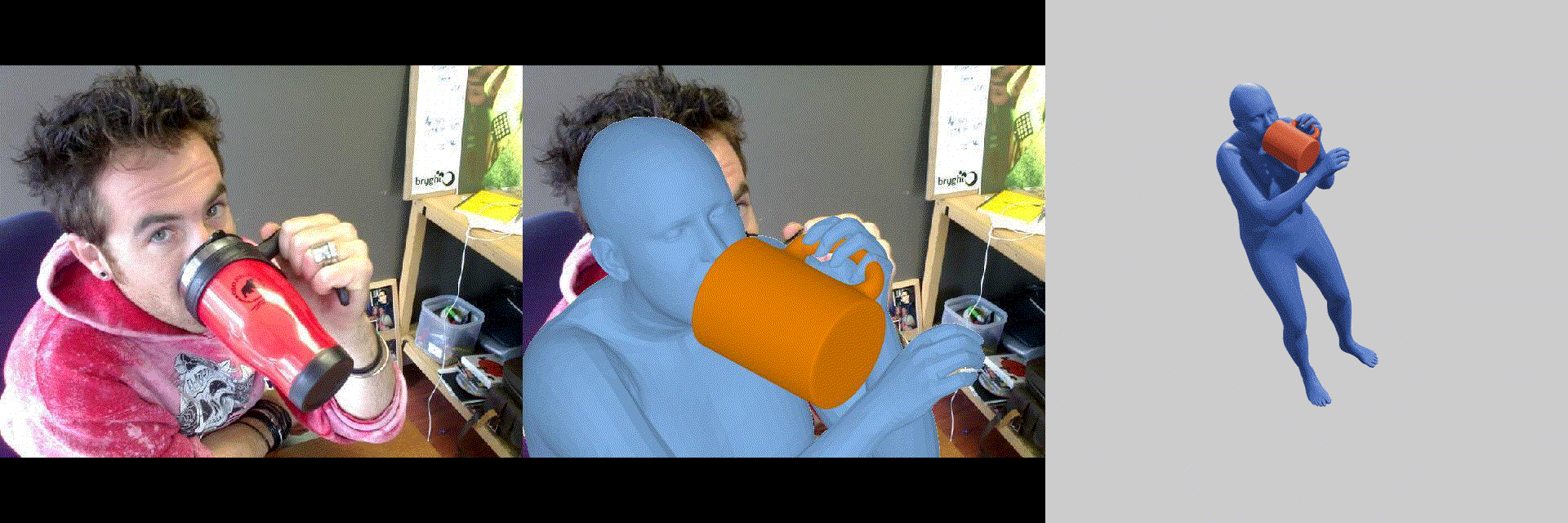


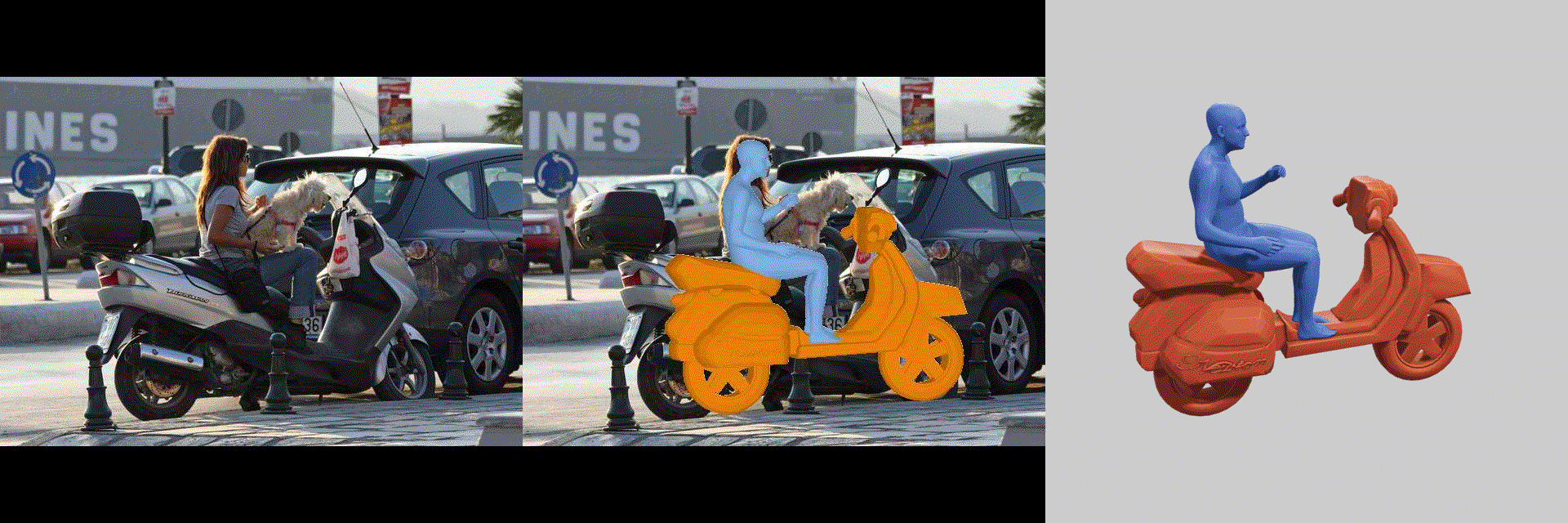

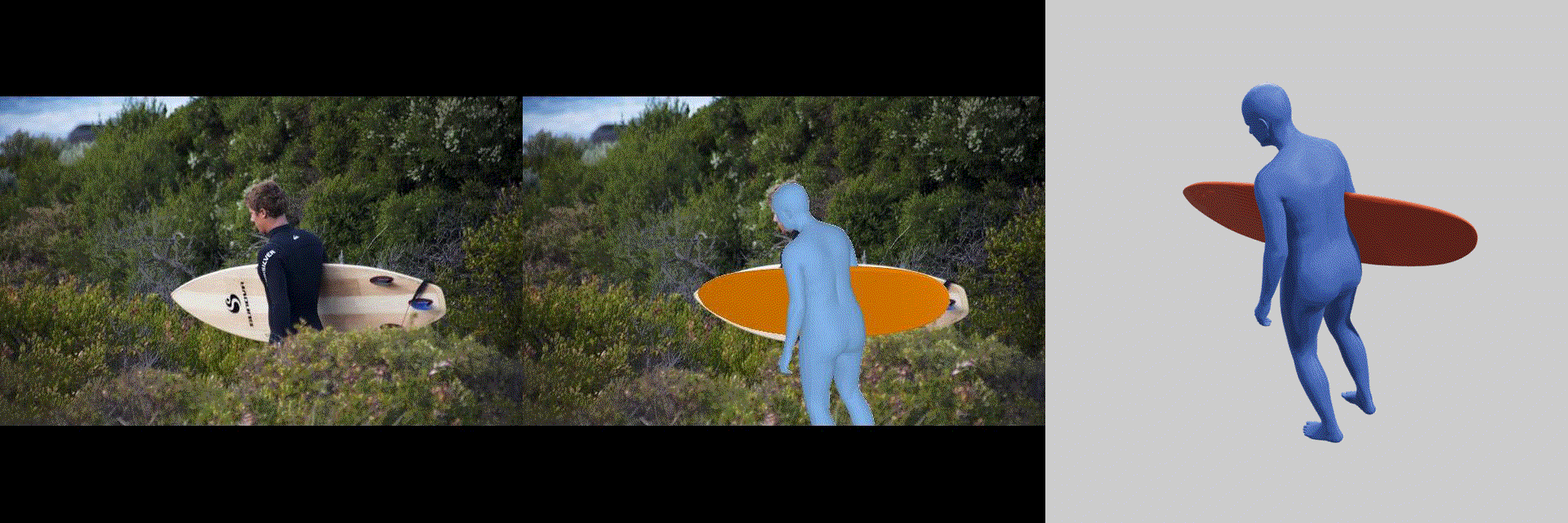
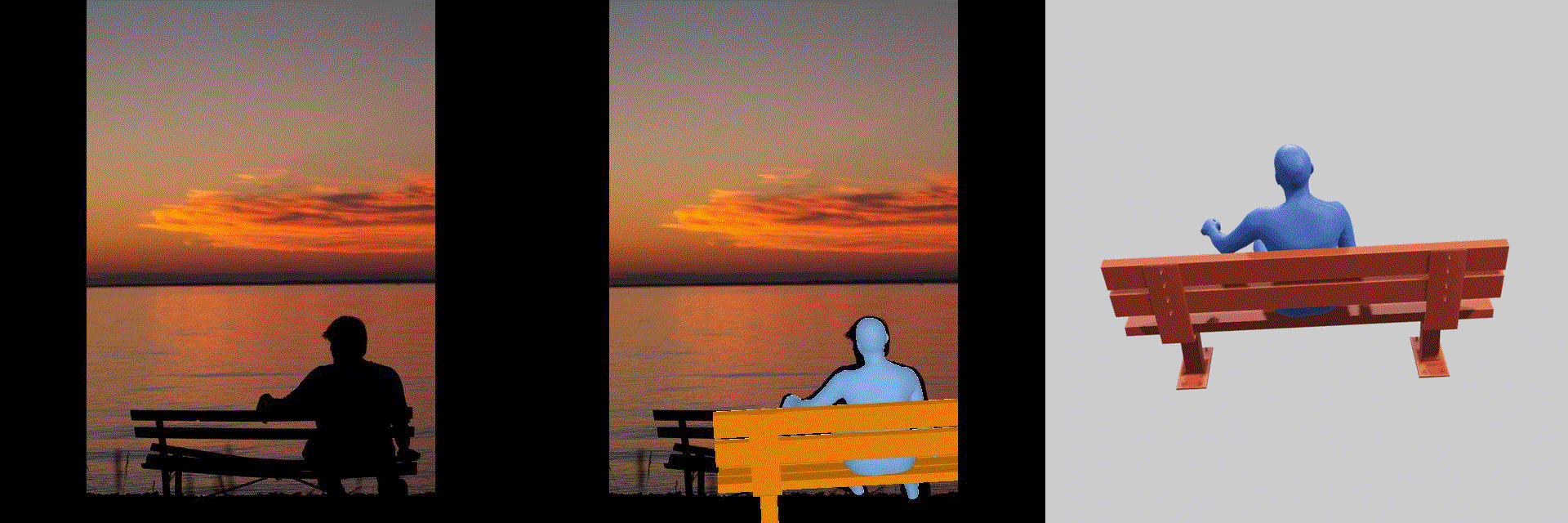


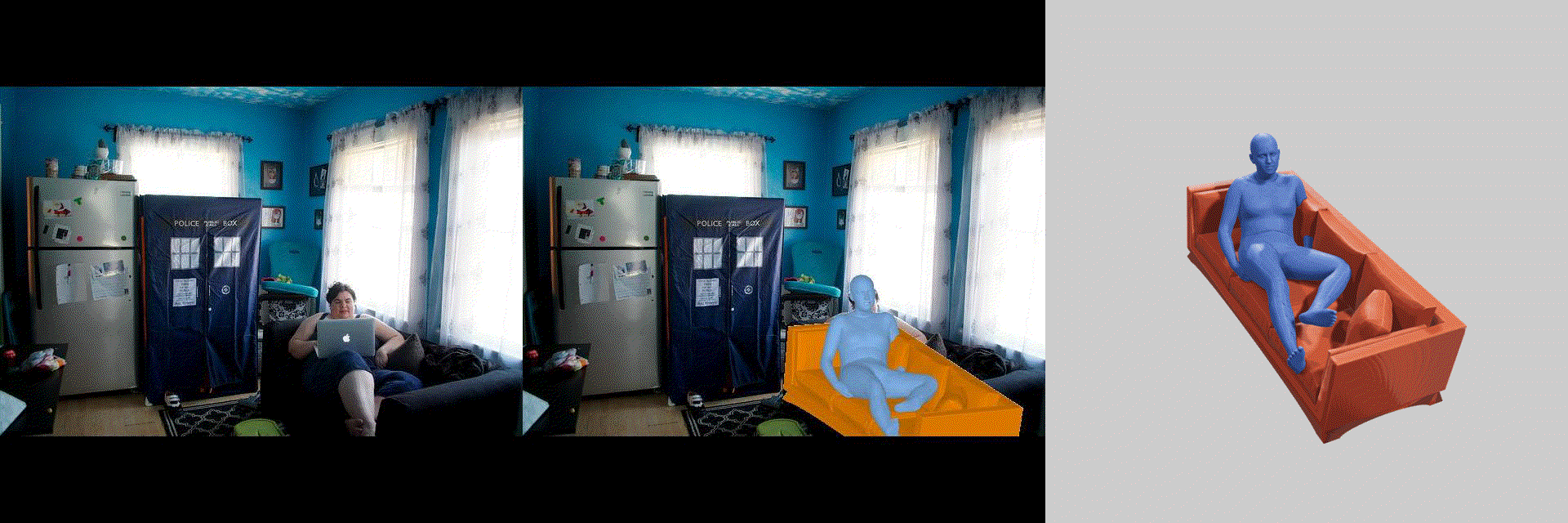

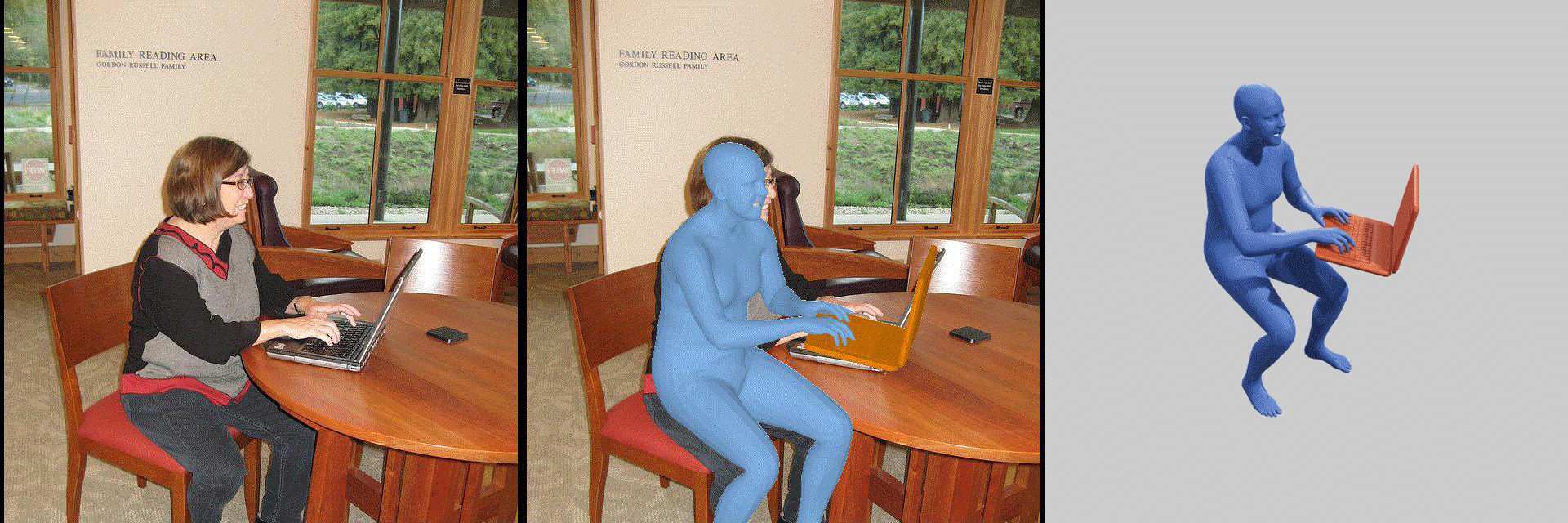
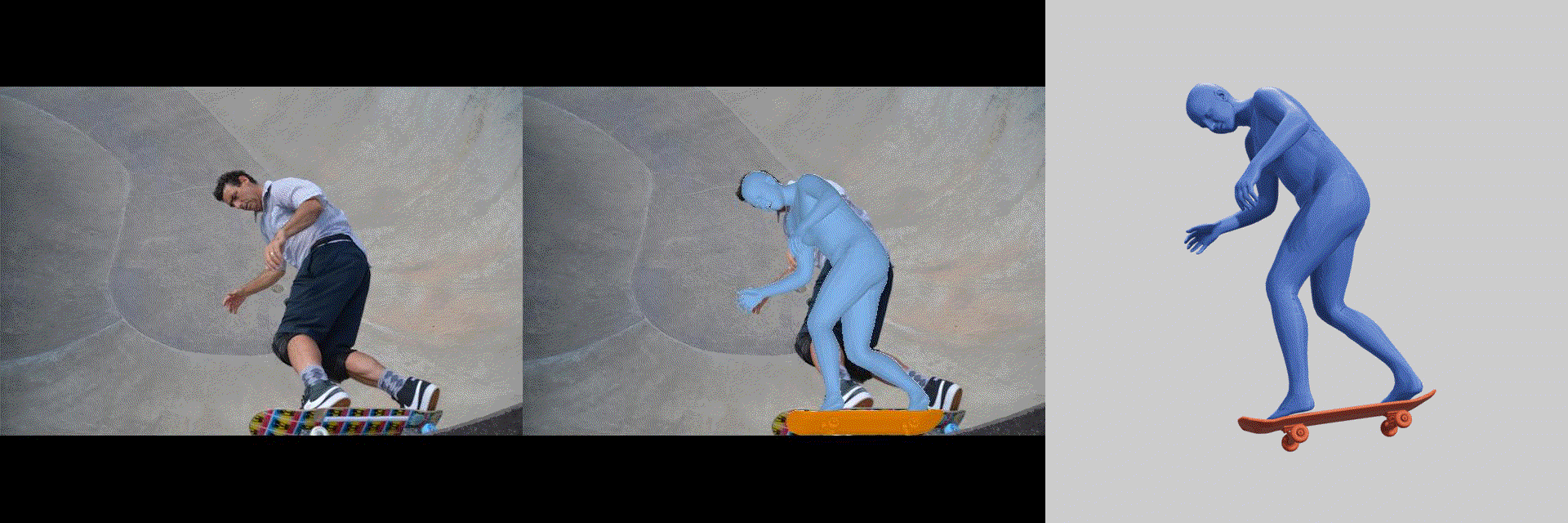


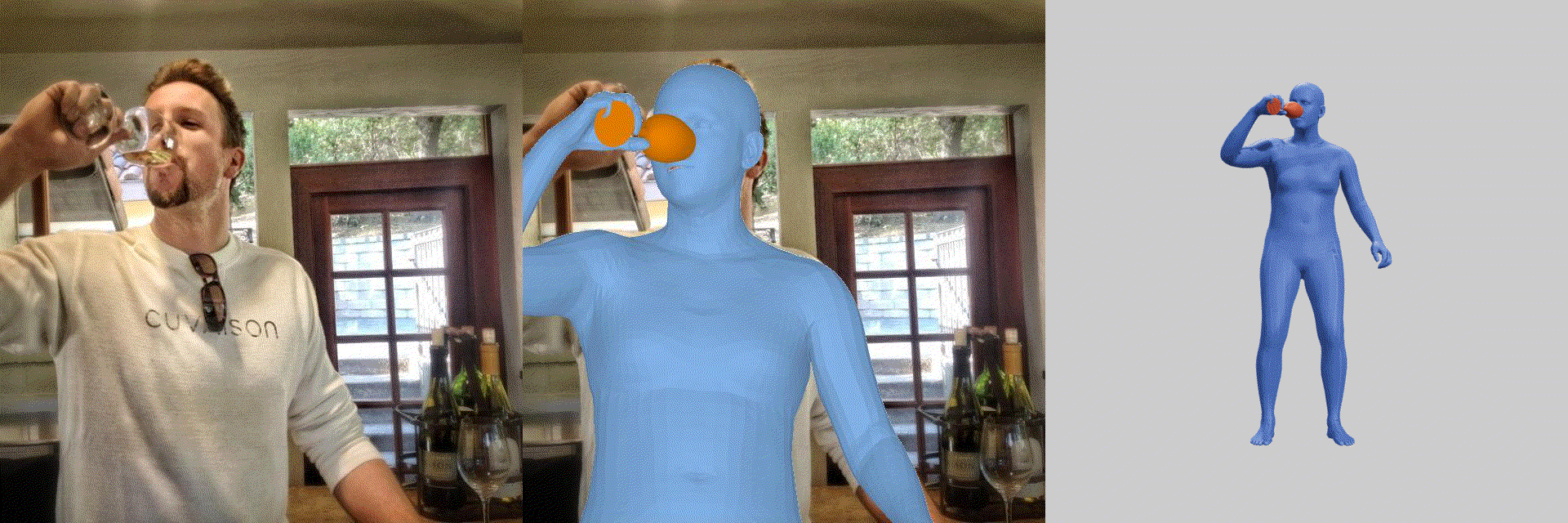
Recovering 3D Human-Object Interaction (HOI) from single images is challenging due to depth ambiguities, occlusions, and the huge variation in object shape and appearance. Thus, past work requires controlled settings such as known object shapes and contacts, and tackles only limited object classes. Instead, we need methods that generalize to natural images and novel object classes.
We tackle this in two main ways:
(1) We collect PICO-db, a new dataset of natural images uniquely paired with dense 3D contact correspondences on both body and object meshes. To this end, we use images from the recent DAMON dataset that are paired with annotated contacts, but only on a canonical 3D body. In contrast, we seek contact labels on both the body and the object. To infer these, given an image, we retrieve an appropriate 3D object mesh from a database by leveraging vision foundation models. Then, we project DAMON's body contact patches onto the object via a novel method needing only 2 clicks per patch. This minimal human input establishes rich contact correspondences between bodies and objects.
(2) We exploit our new dataset in a novel render-and-compare fitting method, called PICO-fit, to recover 3D body and object meshes in interaction. PICO-fit infers contact for the SMPL-X body, retrieves a likely 3D object mesh and contact from PICO-db for that object, and uses the contact to iteratively fit the 3D body and object meshes to image evidence via optimization. Uniquely, PICO-fit works well for many object classes that no existing method can tackle. This is crucial for scaling HOI understanding in the wild.
@misc{cseke_tripathi_2025_cvpr_pico,
title = {{PICO}: Reconstructing {3D} People In Contact with Objects},
author = {Alp\'{a}r Cseke and Shashank Tripathi and Sai Kumar Dwivedi and Arjun Lakshmipathy and Agniv Chatterjee and Michael J. Black and Dimitrios Tzionas},
booktitle = {Proceedings of the IEEE/CVF Conference on Computer Vision and Pattern Recognition (CVPR)},
month = {June},
year = {2025},
}